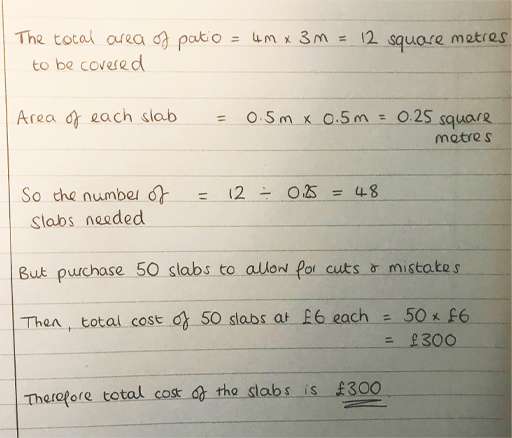4.2 Understanding a solution
You’ll now take a closer look at some of the problems with the solution provided by the contractor in Activity 7.
If you calculate 4 × 3 ÷ 0.5 × 0.5 following BEDMAS, the answer is 12. However, the contractor seems to have worked this out as 48. What they needed to do to make this calculation clear was to include brackets: (4 × 3) ÷ (0.5 × 0.5) = 48.
There is another problem with the contractor’s calculation. Does (4 × 3) ÷ (0.5 × 0.5) = 288? No, it doesn’t – so the contractor has misused the equals sign here and needed another line of working.
What about ‘288, call it 50 to be safe’? Why is the contractor calling 288, 50? This doesn't make sense. Finally, what about ‘so = 50 × 6 = 300’? Do you really know if the 300 means slabs or pounds?
Figure 2 shows another way that the contractor could have written out your quote to be clear:
This solution now:
- explains using words in each step of the working
- uses a new line for each part of the working
- makes use of linking words such as ‘so’, ‘then’, ‘but’ and ‘therefore’
- uses equals signs correctly
- includes units to make the final answer and workings clear.
If you follow these basic ideas, your maths will be clear to others and – most importantly – clear to you.
So, that was the final message of this course! And if you follow it, this really will make a big difference to your maths.


